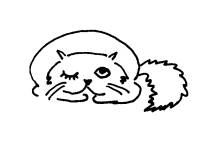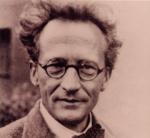Schrödinger commented:'It is typical of these cases that an indeterminacy originally restricted to the atomic domain becomes transformed into macroscopic indeterminacy, which can then be resolved by direct observation.'
This gedankenexperiment provides a striking example of the paradoxes one has to face if he adopts a naïve interpretation of quantum states, i.e. an interpretation that conceives state vectors as a description of the putative properties of a system (see superposition).
Aside from interpretational issues, the cat paradox raises the question of whether quantum theory has to be considered a universal theory. Does the superposition principle apply without restrictions to any physical situation, including those involving macroscopic systems? The cat paradox does not compel us to answer negatively. But if we want to argue for the universality of quantum theory, we must provide an explanation of why the superposition principle (i.e. the very core of the quantum formalism) seems not to hold for macroscopic bodies. Put in another way, we have to explain why, to make correct predictions about cats, we just need two biological states ('living' and 'dead') and not their superposition. It must be emphasised that our macroscopic experience is not at odds with quantum theory. The correlations observed at the macroscopic level appear more as a restriction of the whole spectrum of the correlations predicted by quantum theory. So the question is: does quantum theory possess an inner mechanism explaining why, at the macroscopic level, only those quantum correlations are actually observed that fit ordinary experience? Together with the reduction of the wave packet, these questions express the core of the so-called 'measurement problem'.





